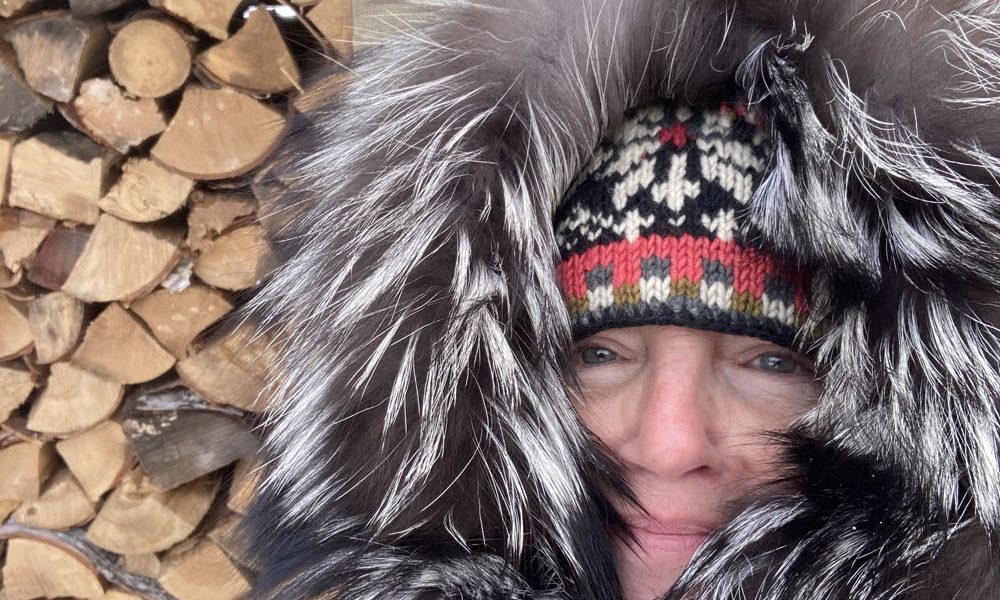Trail Time – Naming Places
January is a bit quieter than normal on the Trail. We usually have two sled dog races this month, but the John Beargrease Sled Dog Marathon was canceled, and the Gunflint Mail Run Sled Dog Race was postponed until February 10. There hasn’t been much snowmobiling either, because of so very little snow up here. But there’s still plenty of winter fun to be had. The walking has been great. The skating has been out of this world fantastic and the folks at Hungry Jack, Poplar Haus and White Pine all cleared skating trails on their lakes. Bearskin Lodge has 16-20 K of groomed trails now, and Golden Eagle Lodge has over 25 K of groomed trails, some for your good skis and some for your bad skis (due to the rocks). A Central Gunflint Trail Nordic Ski Pass is required at Bearskin and Golden Eagle. It’s available at either lodge, and good for both.
The cold and snow have transformed our woods and lakes once again. This morning long blue shadows stretched across the snowy surface of the lake, reaching west, away from the sun rising behind a steep hill to the east. That hill and its cliff mark a peninsula between two bays of the lake. At the highest point of the hill, a crooked tree once stood. We named it the Dr. Suess Tree for its resemblance to the fantastic flora that came from the author’s imaginative mind.
Since we moved to the Gunflint Trail, we have named various landmarks around us so we could talk about the landscape and understand one another. There’s The Cut, a former logging skid road made after the big blowdown of the late 1990s in order to haul the big fallen white pines up the steep hill. The former road is now filled with willows that have grown tall reaching for the sun. Their lower branches, which get no sunlight, are bare of leaves. I now call it the Willow Walk and it makes a lovely path that the willows arc over. In the winter, the snow load bows the slender trees down and makes a perfect secret place for snowshoe hare and grouse. In the spring the animal droppings are thick on the ground under the willows. At the top of the willow walk is The Big Ant Mound, which I keep tabs on in the summer to see if bears are moving through. Some years it gets decimated. Last summer it remained undisturbed. Some other places I’ve named are the Aspen Loop and my favorite: the One-Acre Wood, named in homage to Winnie-the-Pooh’s home forest: the 100-Acre Wood.
I think this impulse to name places isn’t solely due to claiming ownership but also springs from a desire to belong to a place, and to name the things around us so we can build our stories. The names of these places help form my own mental map of the land I call home.
Animals and birds also form mental maps, and I wonder if each remembered place is a picture or some impulse in their minds. Maybe the places on their mental maps are generalized, like, “lots-of-berries” or “water here in dry times” or “seeds stored here.”
We know that birds from the Corvid family, like ravens, gray and blue jays can keep track of over a thousand different places where they have stored food for the winter. Chickadees belong to another family of birds, but they also make mental maps of their stored food. And, in fact, the chickadee has another marvelous winter survival adaptation: their brains grow larger in late summer and early fall in preparation for winter, so they can stuff more memory in their little heads. Bird biologists have surmised that old neurons are replaced by new neurons in the hippocampus, the brain’s area for memory. Chickadees also can slow their metabolism down and go into a hypothermic state to save energy. And, like other birds, they puff up their feathers to trap body heat in the cold.
Blue Jays, like squirrels, bury nuts in the ground to store them, so they form their own mental maps as well. And there’s a bonus: whatever they don’t eat will grow, with the right conditions, which means after a fire, or a blowdown, or logging, Blue Jays help re-forest the landscape. Blue Jays are credited with helping oaks and other tree species migrate north and east after the last Ice Age.
Since the cold temperatures came last week, we haven’t seen many blue jays or other birds, just mainly chickadees, ravens and nuthatches. Oh, yeah, and the gray jays, which fly around the cabin and stare in at the windows at us, waiting to see if we will feed them on demand. Sometimes I do, sometimes I don’t, but intermittent reinforcement is the strongest, so they come by almost every day. It’s so funny when I move from room to room in the cabin and the birds change their perches so they can keep an eye on me. “Well,” they seem to saying, “how’s about some grub?”
I’ve seen many snowshoe hares this winter, which is unusual for me, but the ones I’ve seen making great arcing leaps over the snow have not been completely white, but still had gray on their ears and feet. I love seeing them at that stage. Their fur is so beautiful. I’ve also seen pine martens a few times, bounding after — what? — maybe those beautiful hares. And so winter survival goes; each animal using every strategy it can to make it to spring.
— Marcia Roepke












